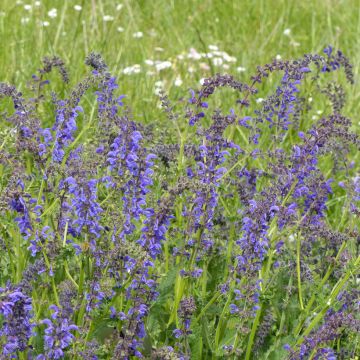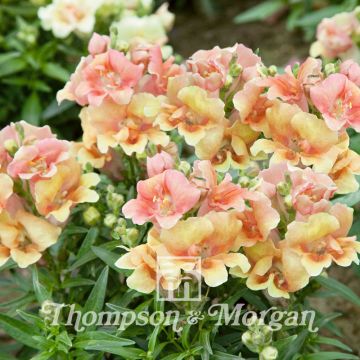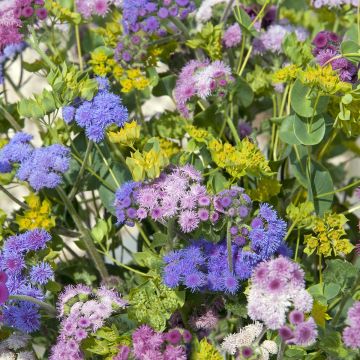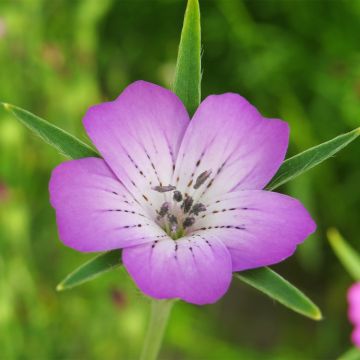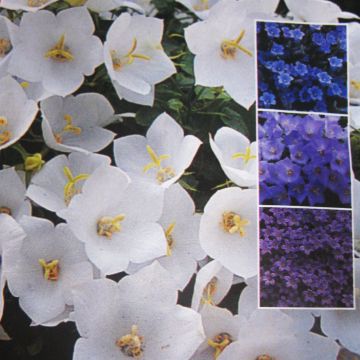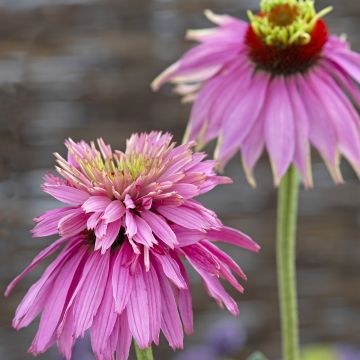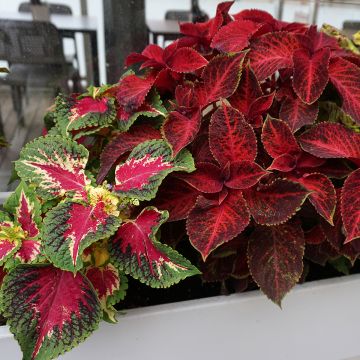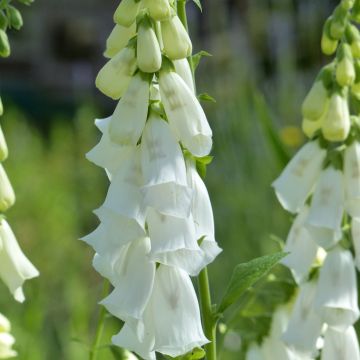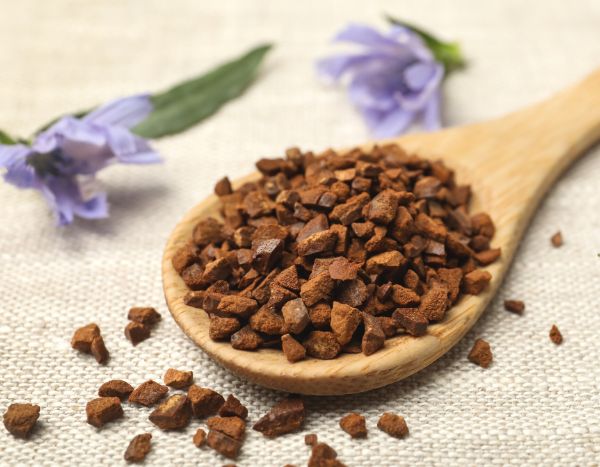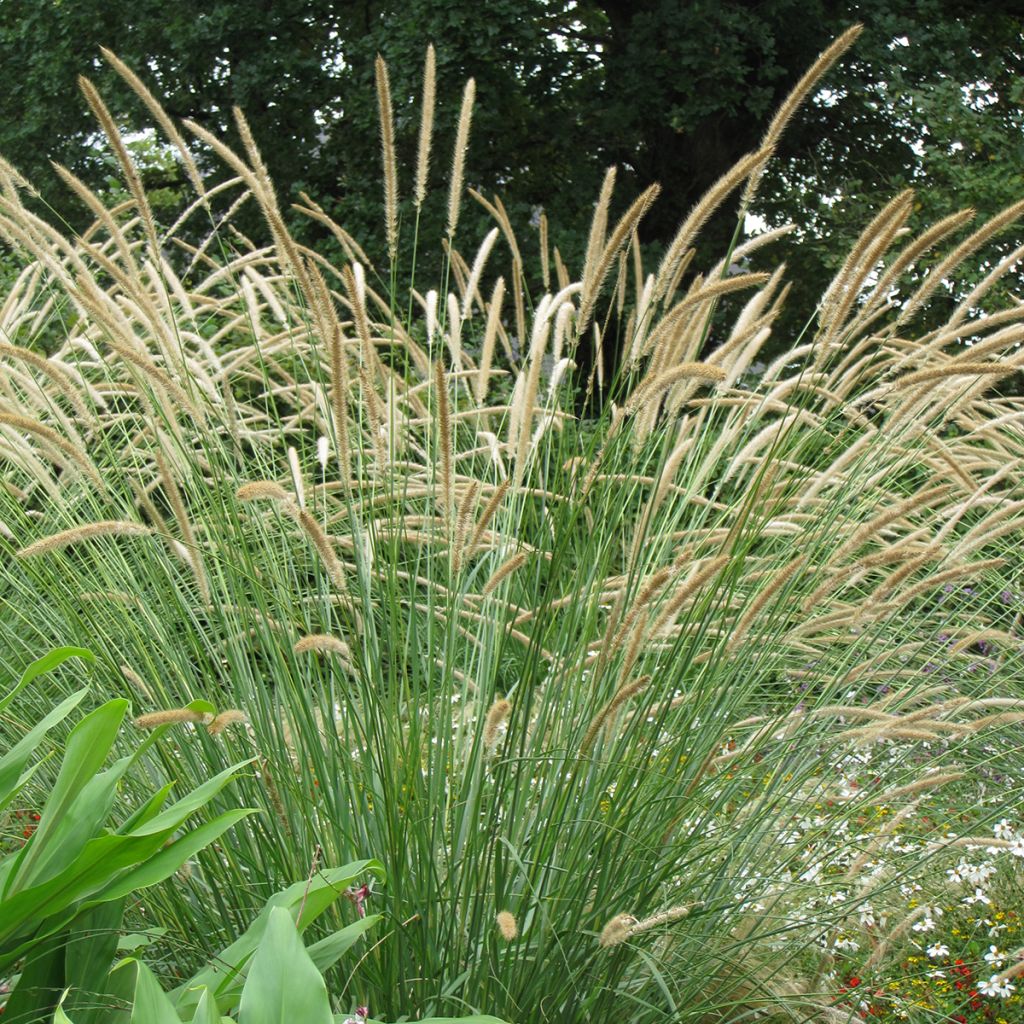

Pennisetum macrourum Tail Feathers Seeds - African feather grass


Pennisetum macrourum Tail Feathers Seeds - African feather grass


Pennisetum macrourum Tail Feathers Seeds - African feather grass
Pennisetum macrourum Tail Feathers Seeds - African feather grass
Pennisetum macrourum Tail Feathers
African feather Grass
The seeds shoot within 3 days under a mini greenhouse, great. So far, 1/3 of the seeds have germinated.
Cindy, 08/05/2023
Special offer!
Receive a €20 voucher for any order over €90 (excluding delivery costs, credit notes, and plastic-free options)!
1- Add your favorite plants to your cart.
2- Once you have reached €90, confirm your order (you can even choose the delivery date!).
3- As soon as your order is shipped, you will receive an email containing your voucher code, valid for 3 months (90 days).
Your voucher is unique and can only be used once, for any order with a minimum value of €20, excluding delivery costs.
Can be combined with other current offers, non-divisible and non-refundable.
Home or relay delivery (depending on size and destination)
Schedule delivery date,
and select date in basket
This plant carries a 6 months recovery warranty
More information
We guarantee the quality of our plants for a full growing cycle, and will replace at our expense any plant that fails to recover under normal climatic and planting conditions.

Would this plant suit my garden?
Set up your Plantfit profile →
Description
Pennisetum macrourum 'Tail Feathers' or African Feather Grass is an easy and rewarding grass to grow. Its elongated spikelets are silver ticked with pinky-beige and evoke long Chinese brushes. It produces culms that reach a height of 1,8 m and 30 cm long spikelets from July to October.
Pennisetum macrourum is a herbaceous perennial belonging to the Poaceae or Gramineae family - also known as the grass family - and is native to South Africa. The basal mound is composed of very fine, drooping leaves, which feature pale green uppersides and silvery undersides. Pennisetum macrourum 'Tail Feathers' is a tall variety that quickly reaches a height of 1.80 m. It proudly displays its silky spikelets that are silver ticked with pinky-beige. Its soft culms undulate gracefully in the breeze.
This variety reveals all its daintiness when it tenderly wraps dahlias and camellias, bringing litheness to their tall, dignified, solemn silhouettes. Couple this beautiful grass with tall coneflower or golden sneezeweed, along with a few oriental poppies to create more rustic or natural-looking scenes. In autumn, the culms take on the most beautiful pale yellow colour.
The graphic appearance of grasses allow you to give movement to certain areas of the garden while producing a delightful effect with their texture and brightness. They gleam irresistibly when set against the light of the rising and setting sun and provide transparency and perspective in even the smallest of gardens. Don't deprive yourself of the feel of these grasses when planted in meadows or mixed in flower beds. Their bottle-brush spikelets are as silky as they look. It’s also good to know that Pennisetum has the extra advantage of controlling soil erosion with its root system.
Position in full sun. It especially likes dry, well-drained soils with a neutral pH. Pennisetum macrourum is not very hardy since it cannot survive temperatures below -5 °C. Keep in mind that these are grasses originating from tropical regions. In winter, protect the plant's base from recurring frost by applying a leaf mulch or dry mulch in a layer a few centimetres thick or more, if your winters are harsh.
In the spring, clear out dead growth from the clump and divide it. This is the best time and the best way to obtain new plants that retain all the varietal characteristics of this beautiful grass.
Report an error about the product description
Pennisetum macrourum Tail Feathers Seeds - African feather grass in pictures
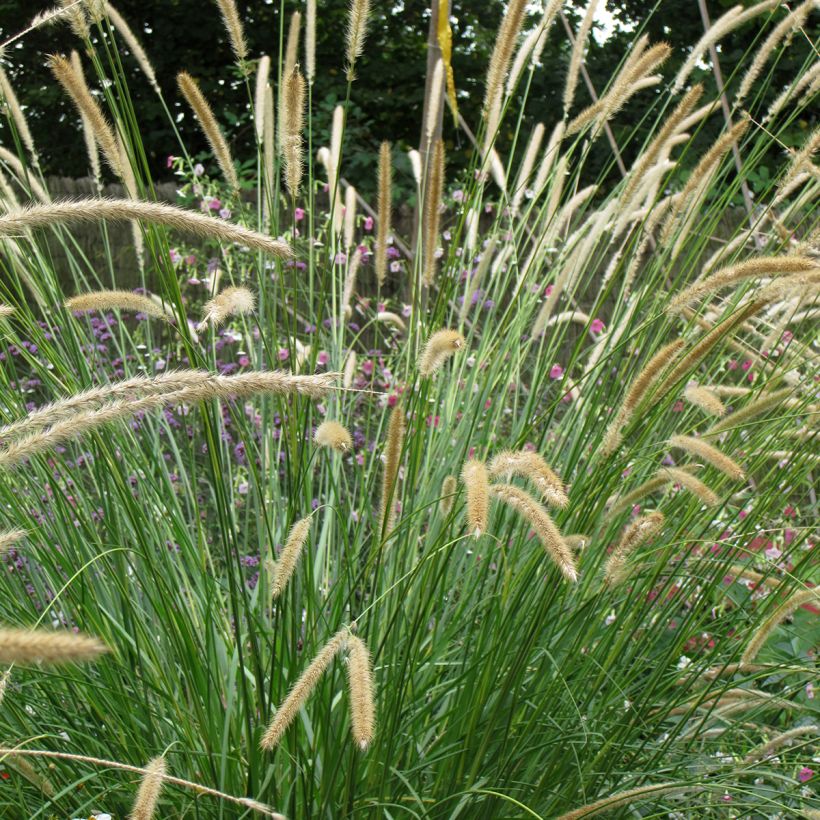

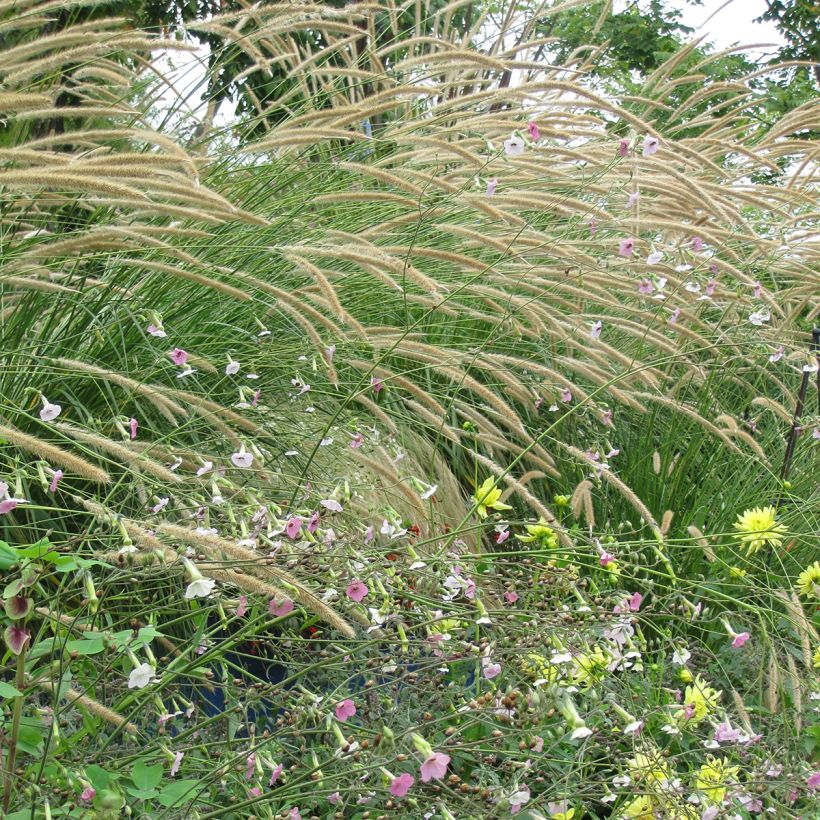

Flowering
Foliage
Plant habit
Botanical data
Pennisetum
macrourum
Tail Feathers
Poaceae
African feather Grass
South Africa
Other Thompson and Morgan seeds
View all →Planting and care
Sow the seeds indoors from February to April. Sow on the surface of a special seed compost that you will keep moist but not excessively. Cover the seeds with a pinch of vermiculite and maintain at a temperature of 20 to 25 °C. You have to wait 7 to 14 days before the young shoots appear. Do not exclude light as it facilitates germination. When the seedlings are large enough to be handled, transplant them into larger pots (e.g. 10 cm in diameter). Acclimatize them gradually to cooler conditions for a few weeks. Pennisetum are hardy down to -5 °C but keep in mind that they are grasses originating from tropical regions. Once all risk of frost has passed and the earth has warmed up sufficiently, you can set them up in loosened soil, taking care to space them 30 to 45 cm apart.
If your soil tends to be heavy and compact, add medium-sized gravel or sand to make it a little more draining. These are deciduous plants. The previous year's foliage remains decorative throughout the winter but must be cut back in early spring to stimulate the emergence of new leaves in the centre of the plant.
Sowing period
Intended location
Planting & care advice
-
, onOrder confirmed
Reply from on Promesse de fleurs
Haven't found what you were looking for?
Hardiness is the lowest winter temperature a plant can endure without suffering serious damage or even dying. However, hardiness is affected by location (a sheltered area, such as a patio), protection (winter cover) and soil type (hardiness is improved by well-drained soil).

Photo Sharing Terms & Conditions
In order to encourage gardeners to interact and share their experiences, Promesse de fleurs offers various media enabling content to be uploaded onto its Site - in particular via the ‘Photo sharing’ module.
The User agrees to refrain from:
- Posting any content that is illegal, prejudicial, insulting, racist, inciteful to hatred, revisionist, contrary to public decency, that infringes on privacy or on the privacy rights of third parties, in particular the publicity rights of persons and goods, intellectual property rights, or the right to privacy.
- Submitting content on behalf of a third party;
- Impersonate the identity of a third party and/or publish any personal information about a third party;
In general, the User undertakes to refrain from any unethical behaviour.
All Content (in particular text, comments, files, images, photos, videos, creative works, etc.), which may be subject to property or intellectual property rights, image or other private rights, shall remain the property of the User, subject to the limited rights granted by the terms of the licence granted by Promesse de fleurs as stated below. Users are at liberty to publish or not to publish such Content on the Site, notably via the ‘Photo Sharing’ facility, and accept that this Content shall be made public and freely accessible, notably on the Internet.
Users further acknowledge, undertake to have ,and guarantee that they hold all necessary rights and permissions to publish such material on the Site, in particular with regard to the legislation in force pertaining to any privacy, property, intellectual property, image, or contractual rights, or rights of any other nature. By publishing such Content on the Site, Users acknowledge accepting full liability as publishers of the Content within the meaning of the law, and grant Promesse de fleurs, free of charge, an inclusive, worldwide licence for the said Content for the entire duration of its publication, including all reproduction, representation, up/downloading, displaying, performing, transmission, and storage rights.
Users also grant permission for their name to be linked to the Content and accept that this link may not always be made available.
By engaging in posting material, Users consent to their Content becoming automatically accessible on the Internet, in particular on other sites and/or blogs and/or web pages of the Promesse de fleurs site, including in particular social pages and the Promesse de fleurs catalogue.
Users may secure the removal of entrusted content free of charge by issuing a simple request via our contact form.
The flowering period indicated on our website applies to countries and regions located in USDA zone 8 (France, the United Kingdom, Ireland, the Netherlands, etc.)
It will vary according to where you live:
- In zones 9 to 10 (Italy, Spain, Greece, etc.), flowering will occur about 2 to 4 weeks earlier.
- In zones 6 to 7 (Germany, Poland, Slovenia, and lower mountainous regions), flowering will be delayed by 2 to 3 weeks.
- In zone 5 (Central Europe, Scandinavia), blooming will be delayed by 3 to 5 weeks.
In temperate climates, pruning of spring-flowering shrubs (forsythia, spireas, etc.) should be done just after flowering.
Pruning of summer-flowering shrubs (Indian Lilac, Perovskia, etc.) can be done in winter or spring.
In cold regions as well as with frost-sensitive plants, avoid pruning too early when severe frosts may still occur.
The planting period indicated on our website applies to countries and regions located in USDA zone 8 (France, United Kingdom, Ireland, Netherlands).
It will vary according to where you live:
- In Mediterranean zones (Marseille, Madrid, Milan, etc.), autumn and winter are the best planting periods.
- In continental zones (Strasbourg, Munich, Vienna, etc.), delay planting by 2 to 3 weeks in spring and bring it forward by 2 to 4 weeks in autumn.
- In mountainous regions (the Alps, Pyrenees, Carpathians, etc.), it is best to plant in late spring (May-June) or late summer (August-September).
The harvesting period indicated on our website applies to countries and regions in USDA zone 8 (France, England, Ireland, the Netherlands).
In colder areas (Scandinavia, Poland, Austria...) fruit and vegetable harvests are likely to be delayed by 3-4 weeks.
In warmer areas (Italy, Spain, Greece, etc.), harvesting will probably take place earlier, depending on weather conditions.
The sowing periods indicated on our website apply to countries and regions within USDA Zone 8 (France, UK, Ireland, Netherlands).
In colder areas (Scandinavia, Poland, Austria...), delay any outdoor sowing by 3-4 weeks, or sow under glass.
In warmer climes (Italy, Spain, Greece, etc.), bring outdoor sowing forward by a few weeks.































